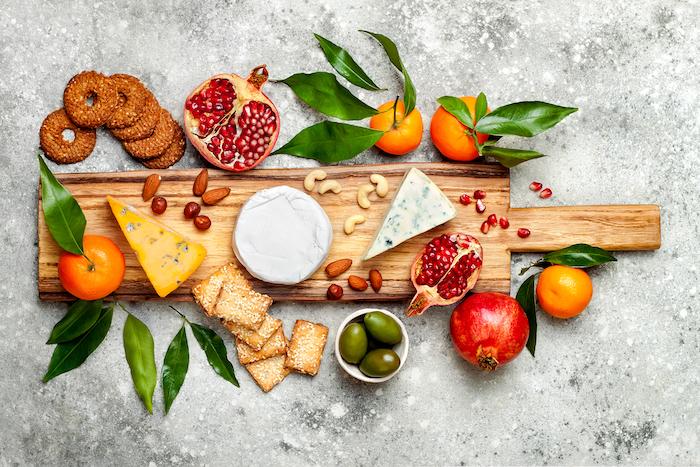Christmas Eve is a great time to slow down and relax a bit during the hustle and bustle of the season. For me, it signals the end of the pre-Christmas rushing around, and really kicks off the holidays. I often have at least four big dinners with my various extended families, so I like to keep Christmas Eve to do whatever I want to do – a bit of grounding before things get very busy.
Last year was my first Christmas with my partner, so I wanted to do something that was both simple and special for just the two of us. I had cooked all day so I could bring a vegetarian meal with me to each event, and I didn’t feel like takeout. I also didn’t want a big, elaborate meal since we‘d be indulging quite a bit over the next few days. Instead, I opted to make a simple but delicious cheese board, which I’ll be continuing this year as part of our Christmas Eve tradition. Here’s how you can build your own healthy cheese board to start a tradition of your own.
Select Your Cheeses
The key to a good cheese board is the balance of different types of cheese. You should have a soft cheese (mozzarella, brie, or goat), a semi-soft cheese (blue, gouda, or gruyere), semi-hard (manchego, provolone, or emmental), and hard (aged cheddar, Romano, or asiago). Play with flavors according to your taste. I love a smoked gouda since I don’t get that smokiness from meat, and this is a great way to try cheese you may be less familiar with. Ask your deli or cheese counter for recommendations and samples to see what you like. The higher quality cheese, the better. You only need about an ounce to an ounce and a half of each cheese per person.Be Picky About the Meat
My partner eats meat, so I include a clean, organic option with a hint of spice. Salami, soppressata, or prosciutto are great additions. Check out Applegate or chat with your deli to make sure you’re choosing meat without nitrates and other harmful additives.Fill Your Plate With Fruit
Fruit pairs fantastically with cheese. Grapes are great, but don’t stop there! Try these combinations:- Chevre/goat cheese: figs, peaches, pomegranate, apricots, blackberries, strawberries, cherries
- Feta: watermelon, grapes
- Blue/bleu: pears, figs, blackberries
- Aged gouda: apricots, apples, pears
- Young gouda: cherries, peaches
- Manchego: quince, apricots, figs
- Cheddar (preferably extra sharp): grapes, apples
- Brie: plums, apples, strawberries, cherries
- Gruyere: cherries, blackberries
- Fontina: apples, plums, pears, grapes
- Asiago: figs, grapes
- Pecorino & parmesan: grapes, pears





